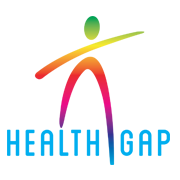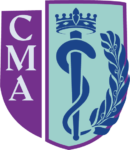Nearly one thousand (1000) Americans suffer a cardiac arrest (the heart stops beating), outside of the hospital, every day. Tens of millions of people witnessed the cardiac arrest of Damar Hamlin, defensive back for the Buffalo Bills, during Monday Night Football on January 2, 2023. The medical professionals realized that his heart was not beating and began to administer immediate cardiopulmonary resuscitation (CPR) and used a readily available device called an automated electronic defibrillator (AED) to shock his heart back to activity. Mr. Hamlin is making a remarkable recovery and was able to be transferred to a Buffalo hospital for further care, just seven days after his on-the-field collapse. Two days later he was discharged from the hospital in Buffalo for further rehabilitation at home and at the Bills facility.
Longstanding data shows us that the survival rate after out-of-hospital cardiac arrest is much worse for Blacks and Hispanics compared to Whites. We know that receiving immediate CPR and AED usage are the keys to people recovering from cardiac arrest. Unfortunately, only 40% of people who have a cardiac arrest witnessed by a bystander get immediate CPR by bystanders. What’s even worse is that if you are Black and experience a witnessed cardiac arrest in public you are 37% less likely to receive bystander CPR than if you were white. Black folks who suffer cardiac arrest at home are 26% less likely than whites to receive potentially lifesaving in-home bystander CPR.
There are a number of possible explanations for this healthcare disparity. First, as it relates to the lower incidence of in-home bystander CPR, we should note that access to CPR training in Black and Hispanic communities is less than in White communities. Studies also report there is less available dispatcher-assisted bystander CPR. Both of these can be related to structural racism and the lack of investment in CPR training and the cultural/language competency of 911 dispatchers. CPR education requires trainers, mannequins, electrodes, AED training devices, sanitation equipment, and culturally appropriate vision aids. The cost of these items for CPR training is a further impediment to underprivileged communities. The distrust of authorities and the health care system, dissimilar CPR instructors, and potential immigration status can add to this list of impediments. Secondly, regarding the bystander CPR racial disparities in public places, one needs to look no further than implicit and explicit layperson biases. Apparently, “public safety concerns may deter bystander response for a Black or Hispanic person having a cardiac arrest as compared to a White person” (NEJM 387:17, Oct. 27, 2022). The data seems to indicate that these concerns are present in majority Black and Hispanic communities as well as low-income communities.
Like all other health disparities, we must try to close the gaps. Providing either no or low-cost CPR will help to overcome the financial barrier. Placing the training in comfortable community locations and securing trainers who look like the clientele or are culturally competent may help as well. A significant investment in the infrastructure of our emergency response is necessary to procure language-appropriate dispatchers and those who are trained in dispatcher-directed-conducted CPR. Spanish speakers as well as a variety of African language experts would be helpful. The addition of mannequins in a variety of skin colors me be of benefit as well.
Mr. Hamlin had a cardiac arrest as the result of a freak accident. The exact cause of his heart stopping is not known yet. What is clear is that he was very fortunate to be surrounded by medical professionals who recognized the problem and immediately began lifesaving CPR and used an AED. Too many Americans do not get the same level of care, particularly if they are people of color. Please avail yourself of training that can equip you to save the life of someone that you love or that someone else loves. It may seem scary, but once you go through the short training you will realize that everyone and anyone can do this. The AED device even talks you through the process!! Go to truecommunity.org, redcross.org, heart.org, or closingthehealthgap.org to sign up for training classes. There is FREE training available in Cincinnati at the Center for Closing the Health Gap during Black History Month.
Clyde E. Henderson, MD
Cincinnati Medical Association

